Abstract
We describe a facile and sensitive reverse-phase h.p.l.c. method for analytical separation of biliary bile pigments and direct quantification of unconjugated bilirubin (UCB) and its monoglucuronide (BMG) and diglucuronide (BDG) conjugates in bile. The method can be 'scaled up' for preparative isolation of pure BDG and BMG from pigment-enriched biles. We employed an Altex ultrasphere ODS column in the preparative steps and a Waters mu-Bondapak C18 column in the separatory and analytical procedures. Bile pigments were eluted with ammonium acetate buffer, pH 4.5, and a 20 min linear gradient of 60-100% (v/v) methanol at a flow rate of 2.0 ml/min for the preparative separations and 1.0 ml/min for the analytical separations. Bile pigments were eluted in order of decreasing polarity (glucuronide greater than glucose greater than xylose conjugates greater than UCB) and were chemically identified by t.l.c. of their respective ethyl anthranilate azo derivatives. Quantification of UCB was carried out by using a standard curve relating a range of h.p.l.c. integrated peak areas to concentrations of pure crystalline UCB. A pure crystalline ethyl anthranilate azo derivative of UCB (AZO . UCB) was employed as a single h.p.l.c. reference standard for quantification of BMG and BDG. We demonstrate that: separation and quantification of biliary bile pigments are rapid (approximately 25 min); bile pigment concentrations ranging from 1-500 microM can be determined 'on line' by using 5 microliters of bile without sample pretreatment; bilirubin conjugates can be obtained preparatively in milligram quantities without degradation or contamination by other components of bile. H.p.l.c. analyses of a series of mammalian biles show that biliary UCB concentrations generally range from 1 to 17 microM. These values are considerably lower than those estimated previously by t.l.c. BMG is the predominant, if not exclusive, bilirubin conjugate in the biles of a number of rodents (guinea pig, hamster, mouse, prairie dog) that are experimental models of both pigment and cholesterol gallstone formation. Conjugated bilirubins in the biles of other animals (human, monkey, pony, cat, rat and dog) are chemically more diverse and include mono-, di- and mixed disconjugates of glucuronic acid, xylose and glucose in proportions that give distinct patterns for each species.
Full text
PDF
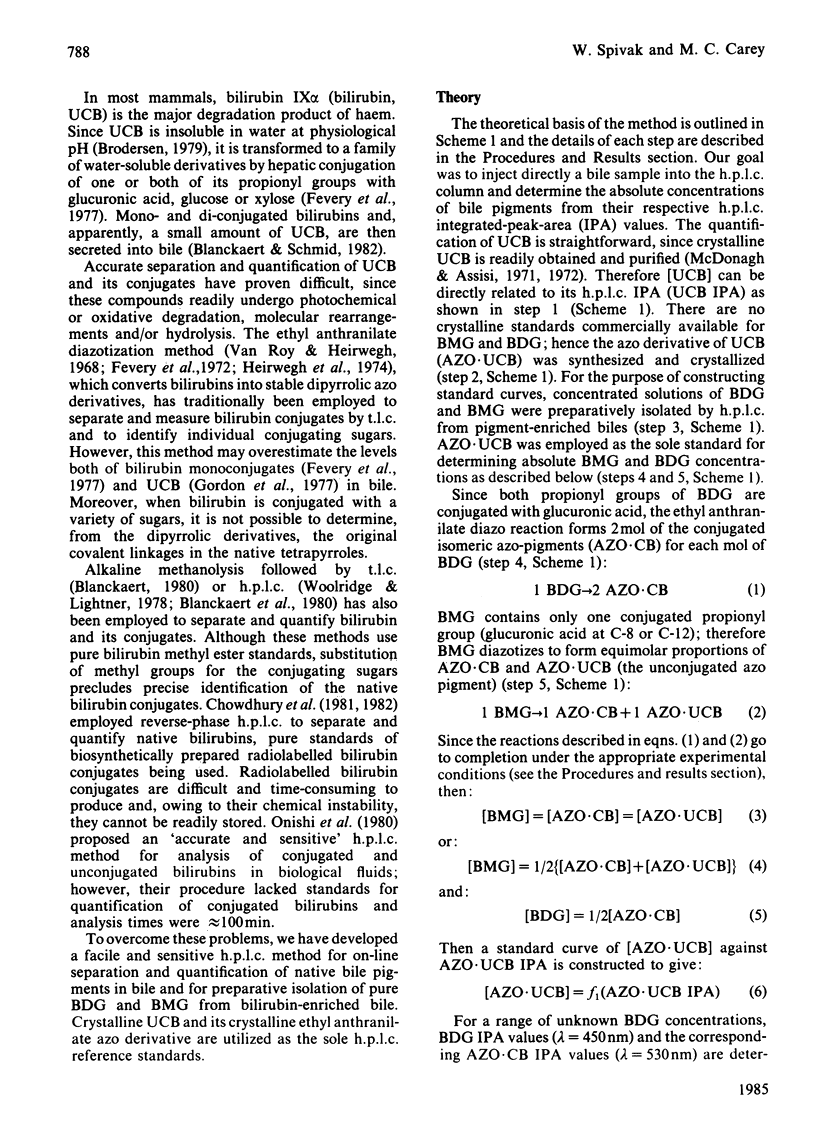
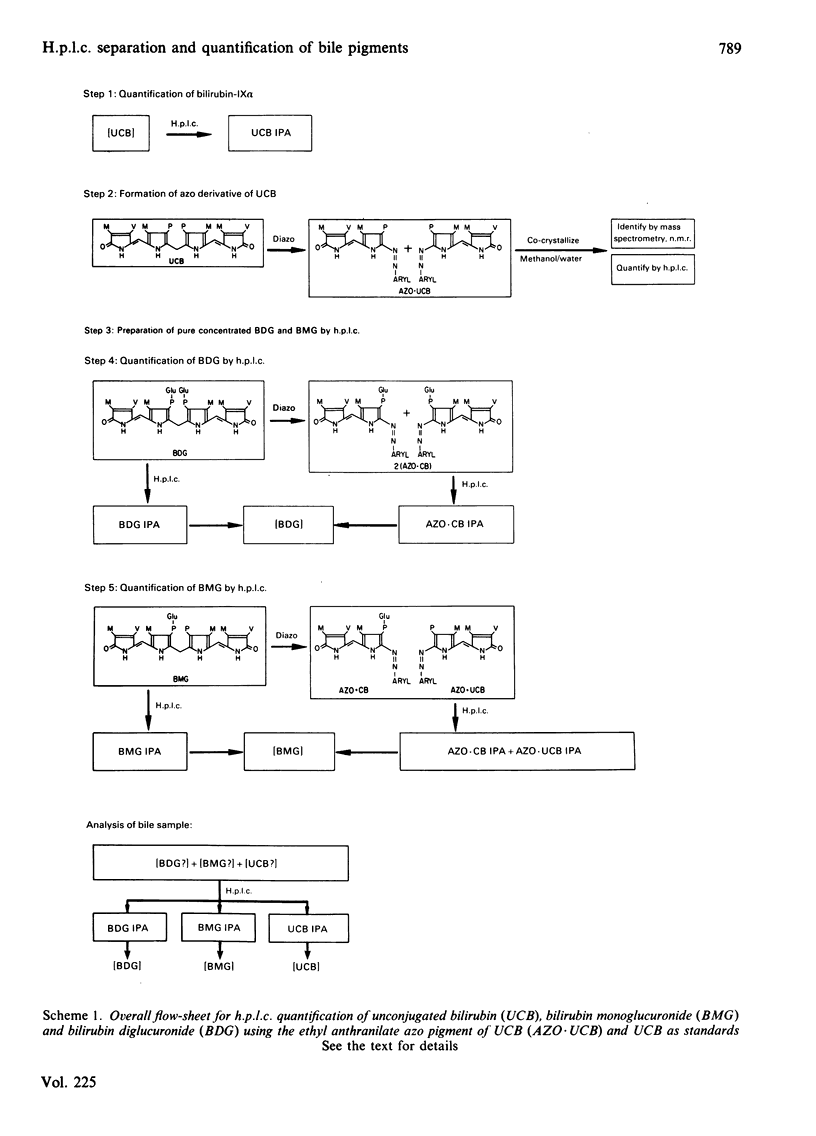
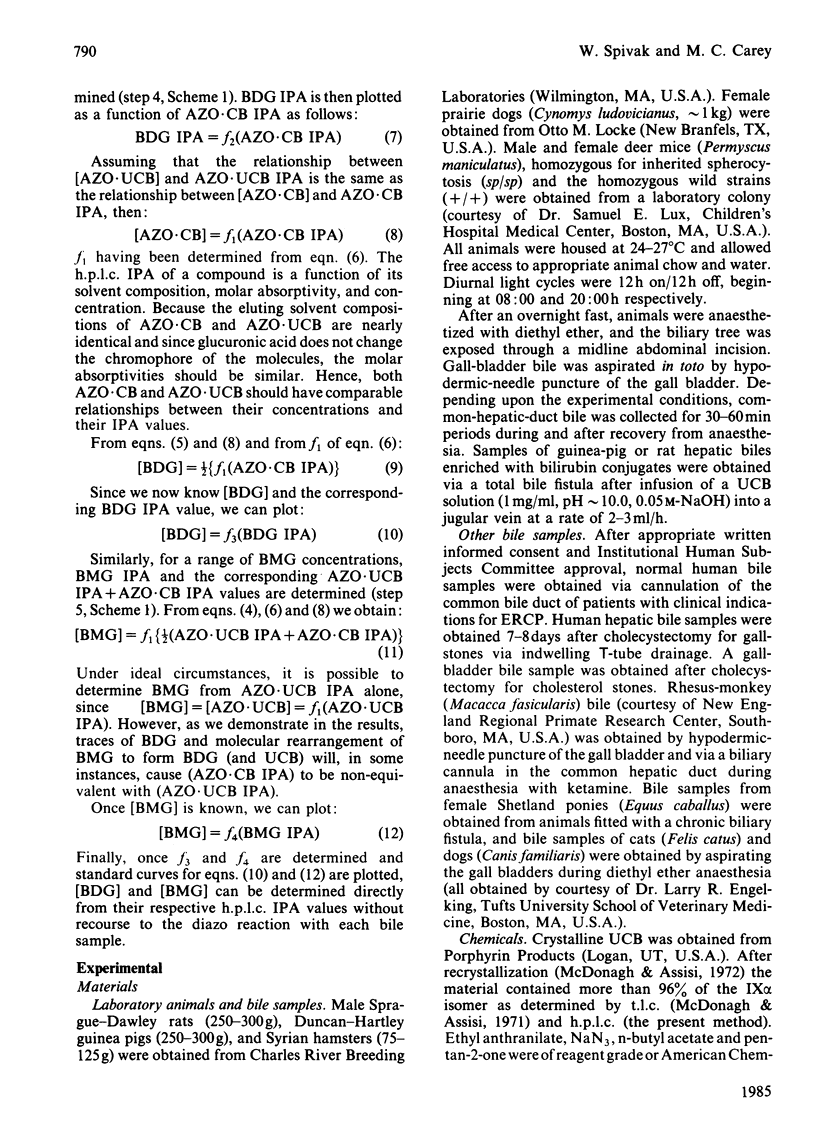

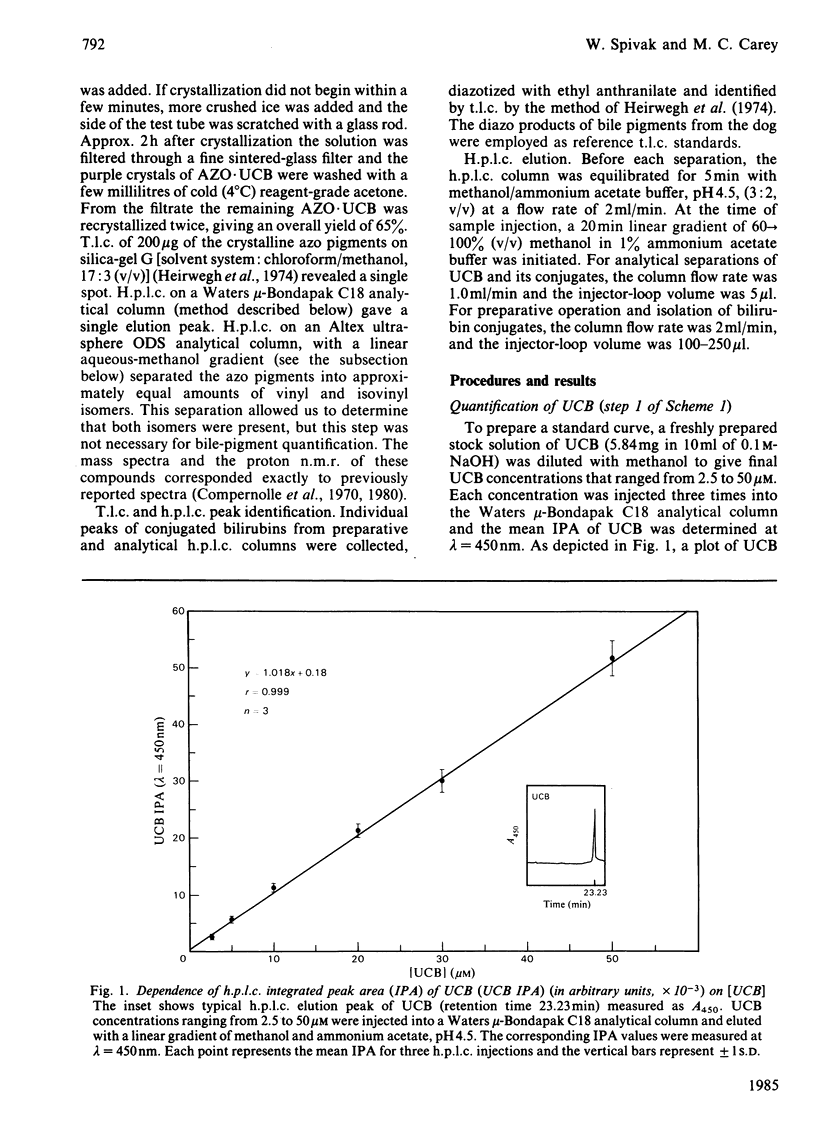
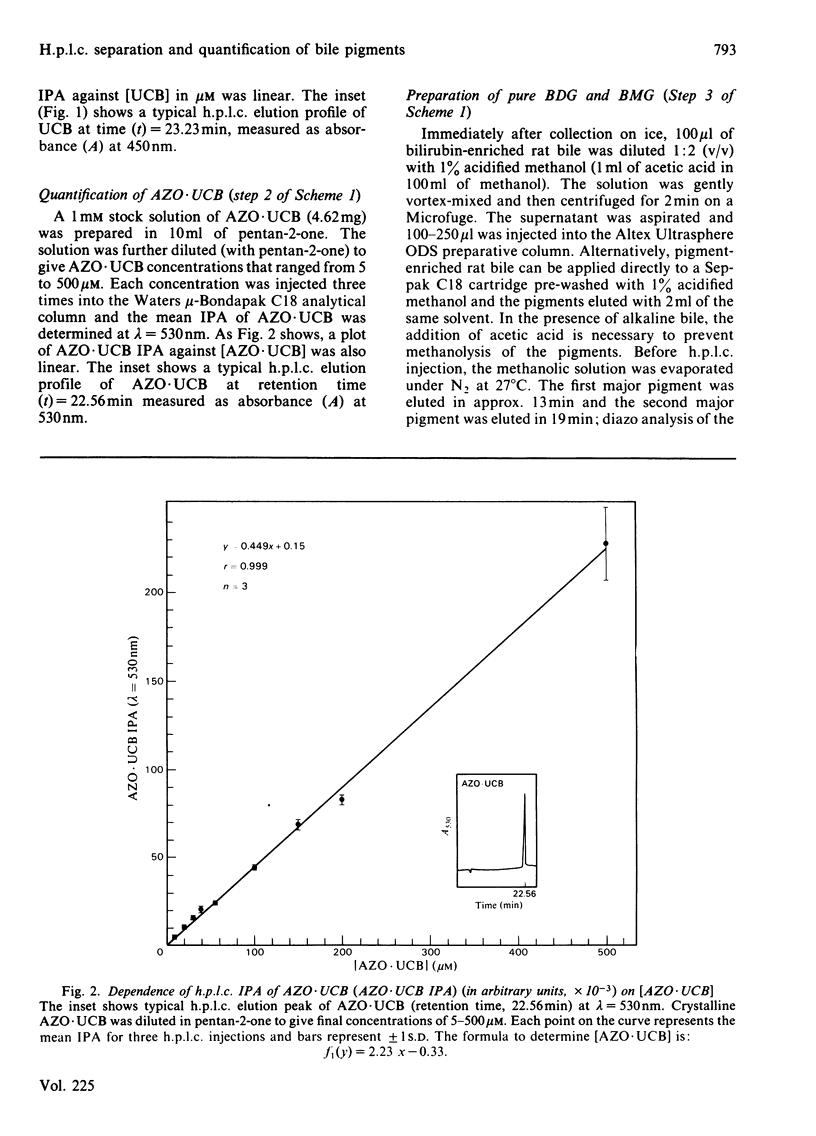
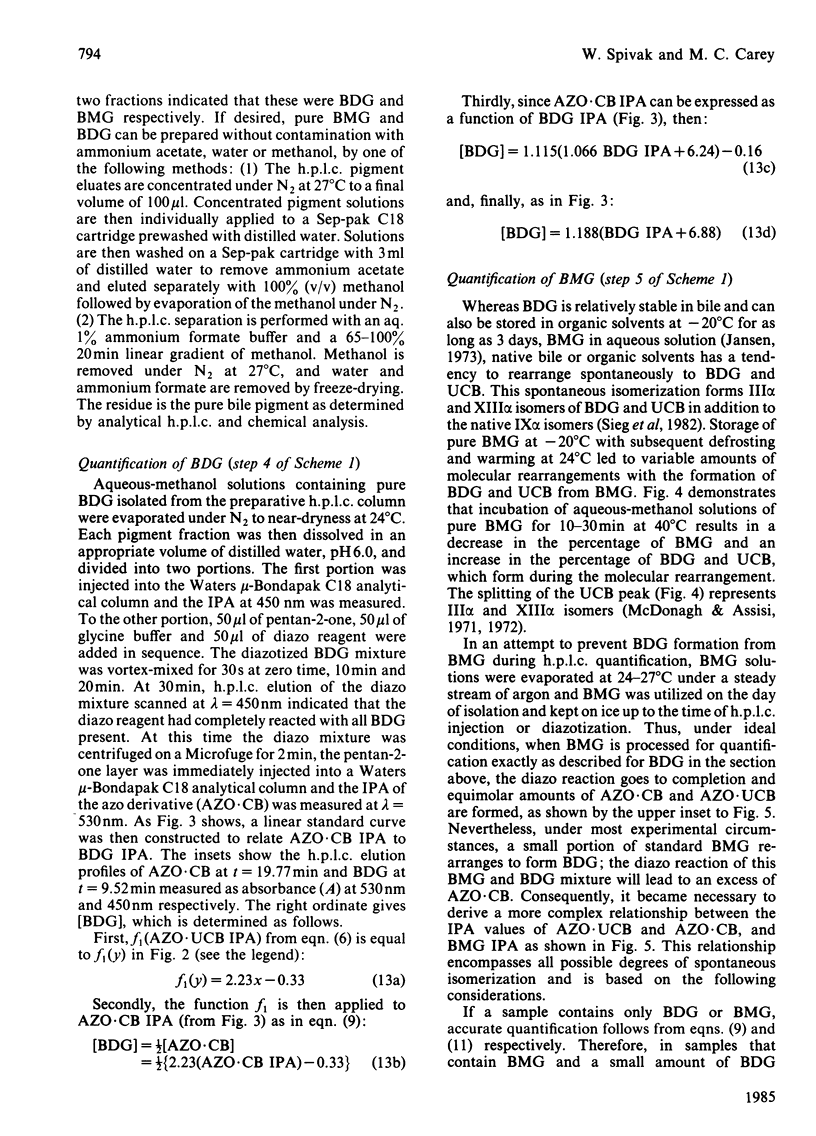
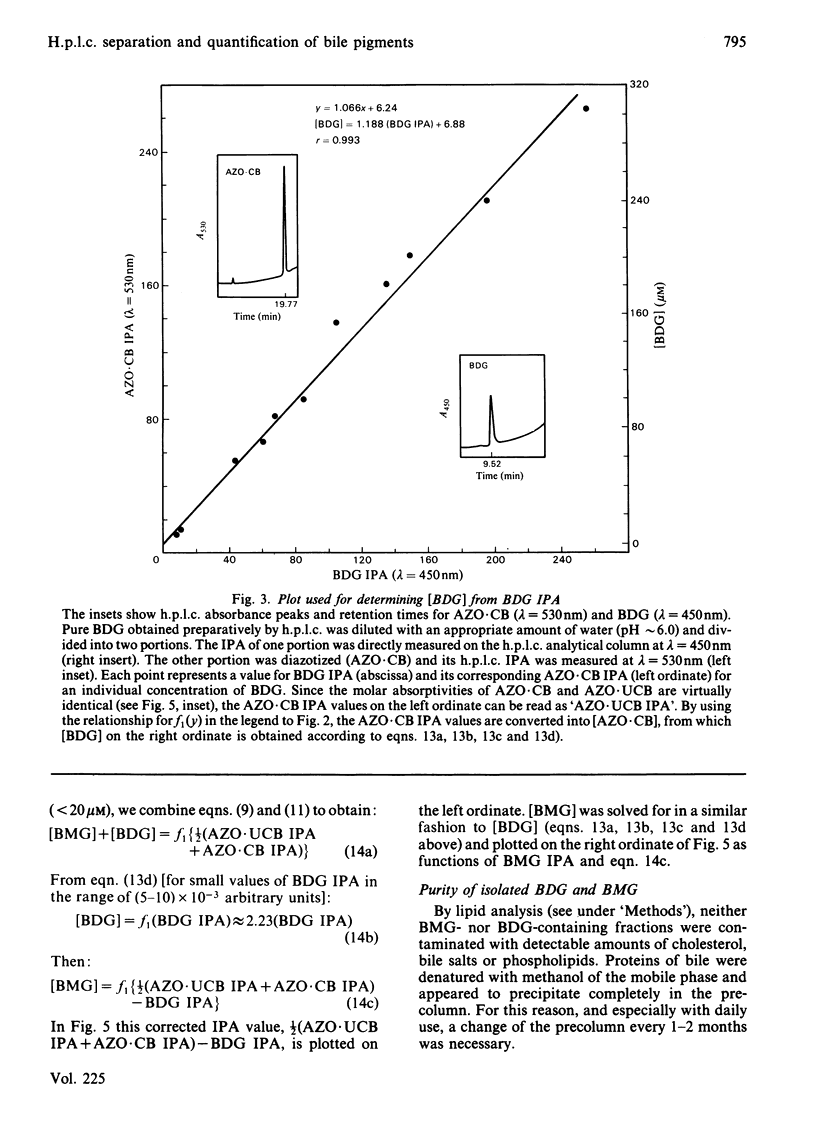
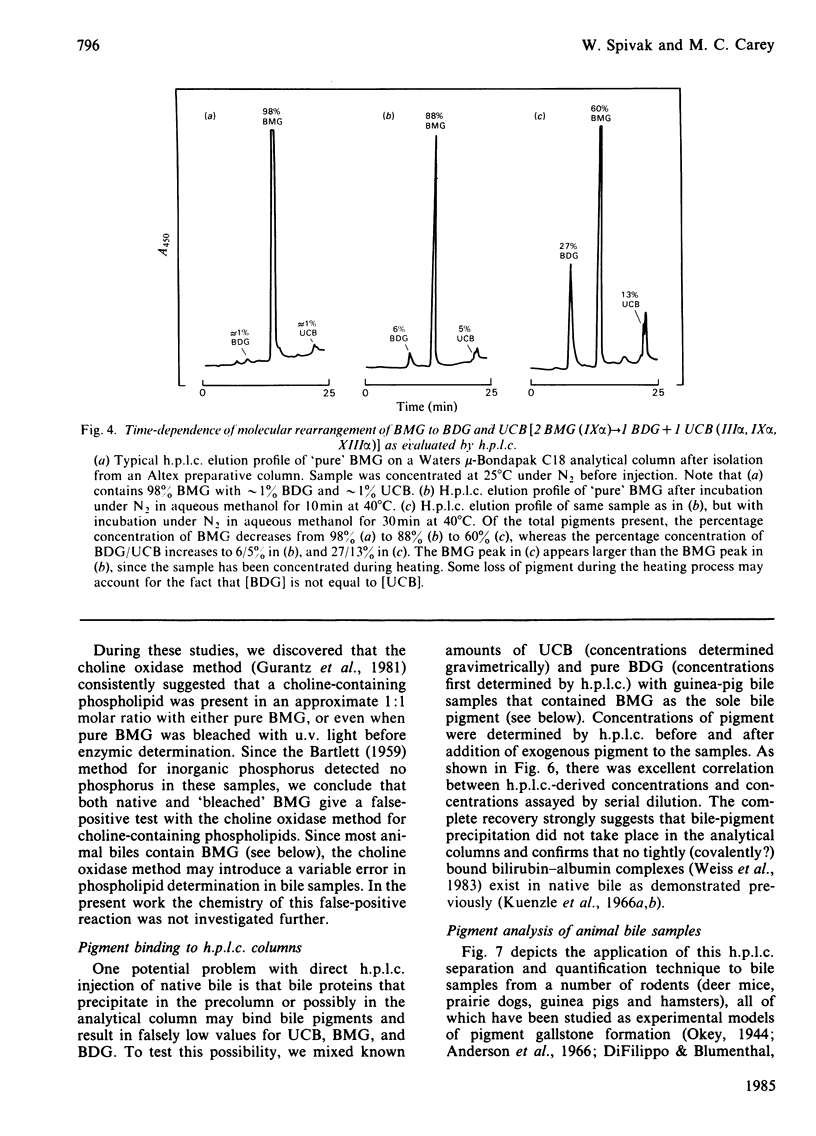
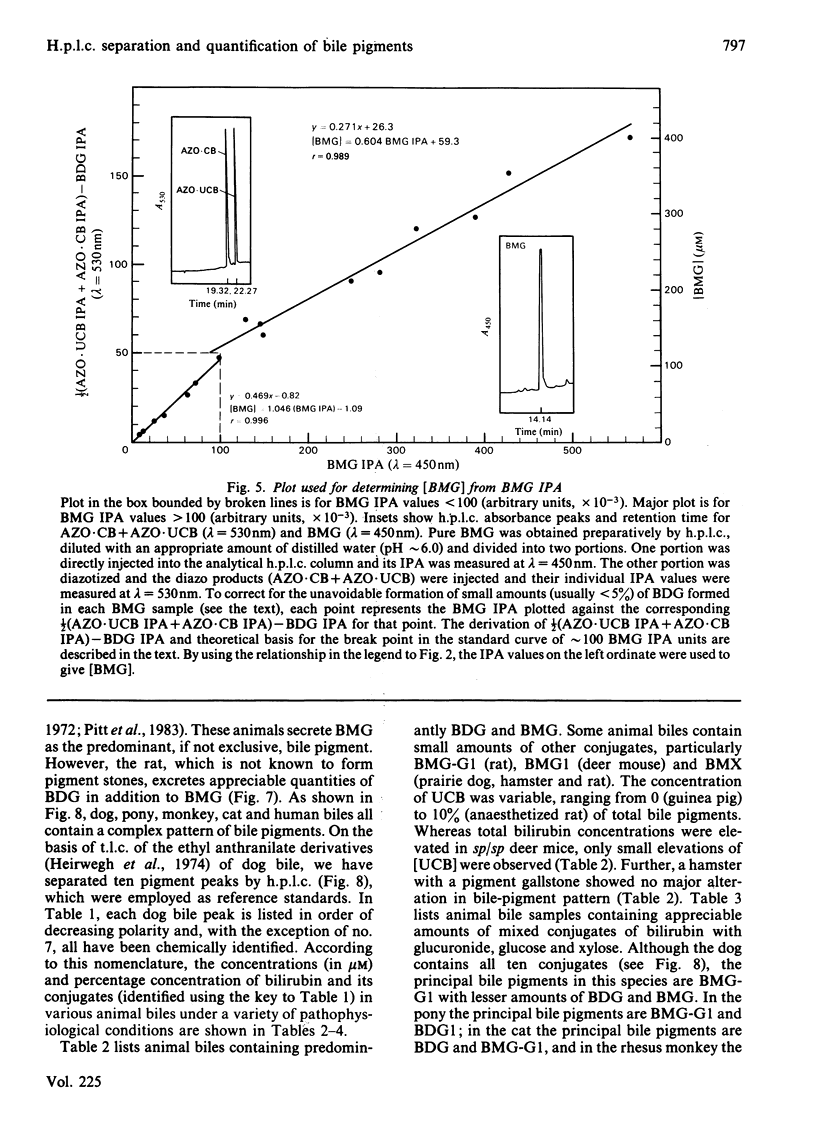
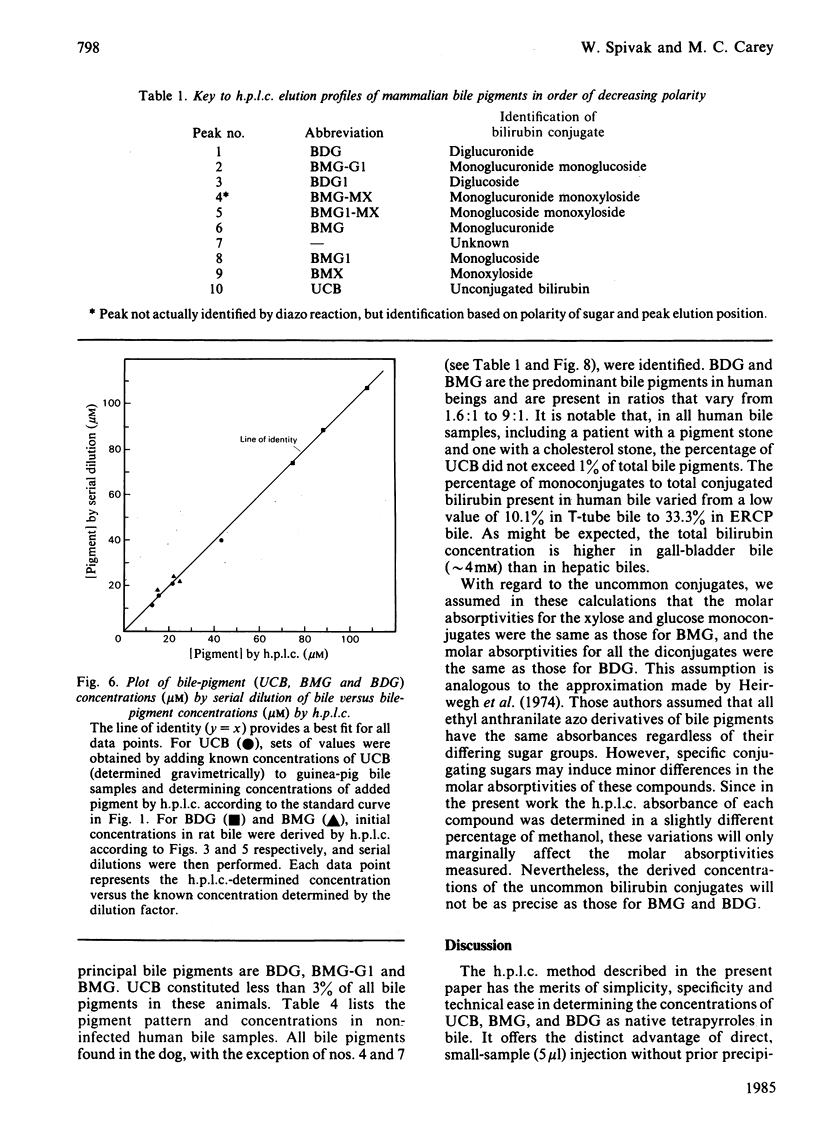
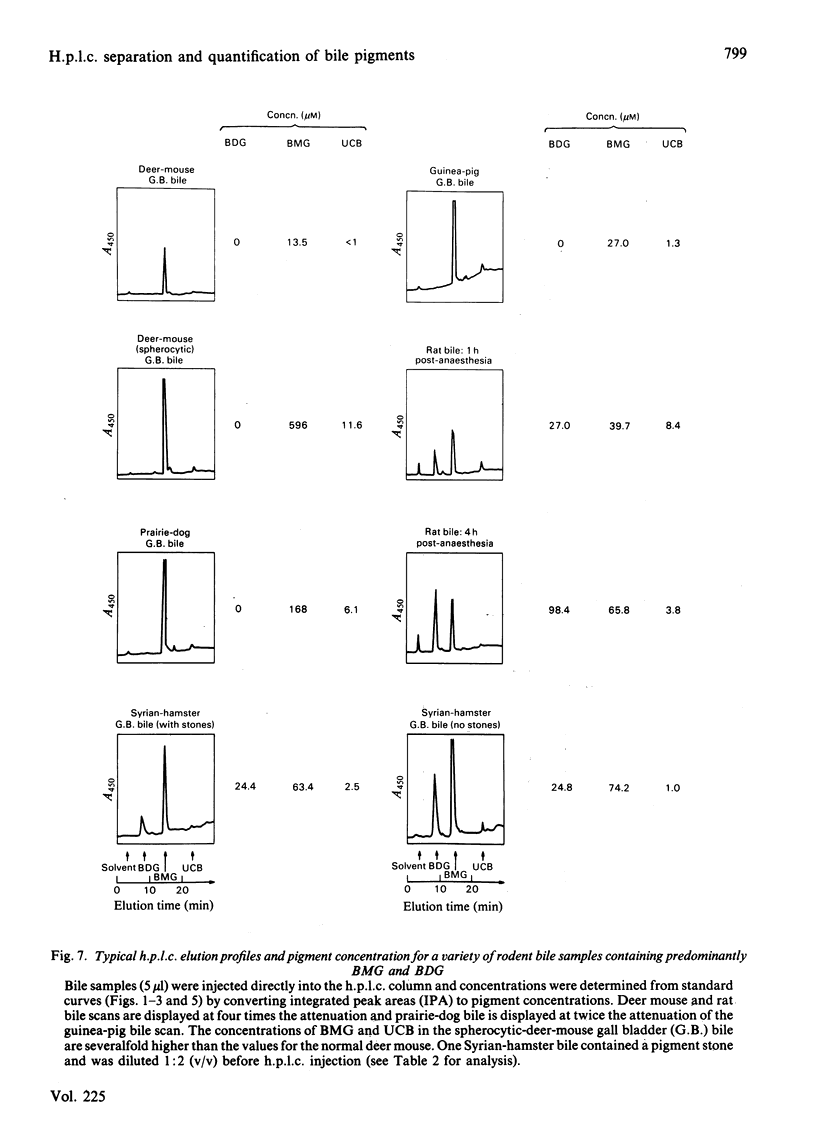

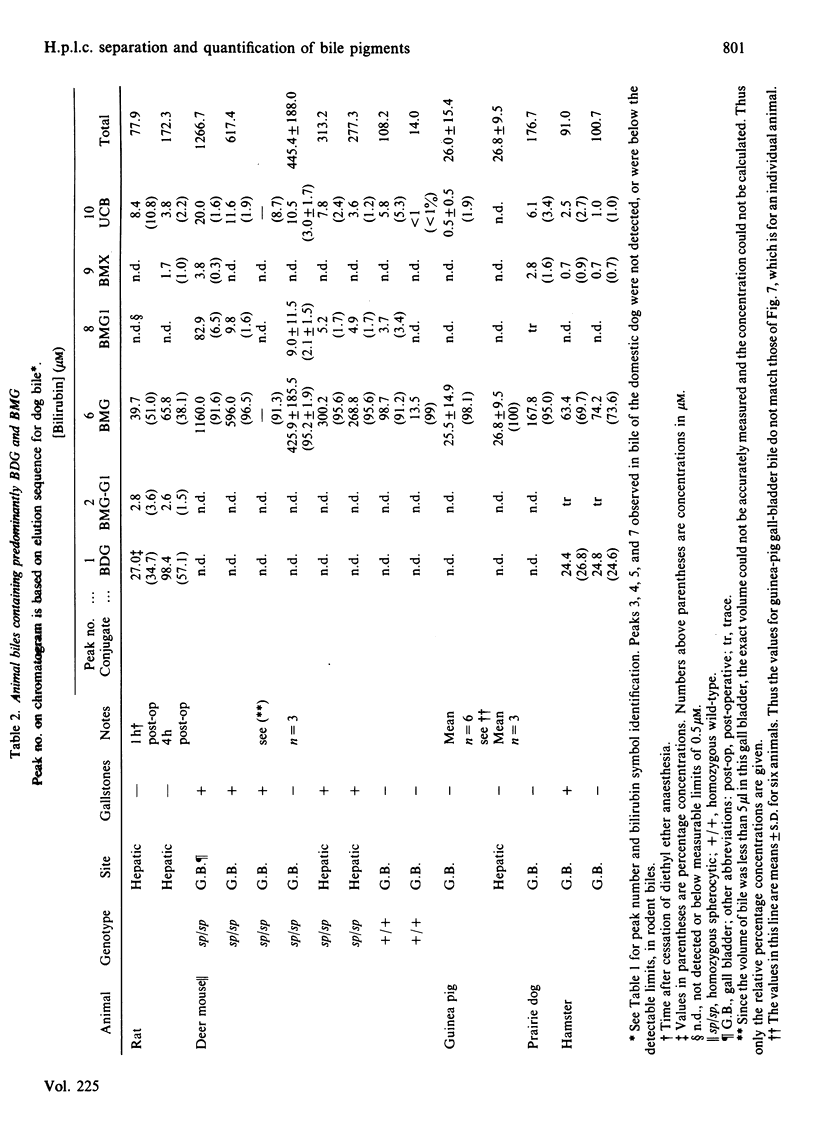
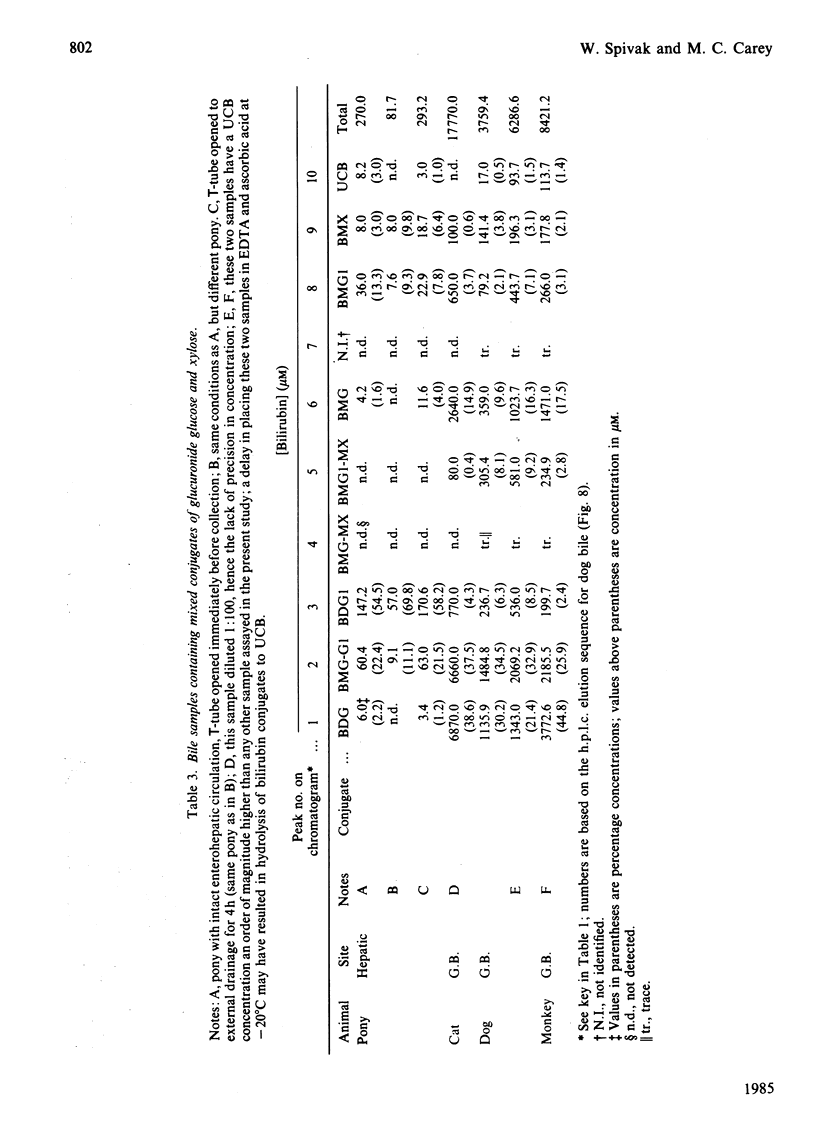
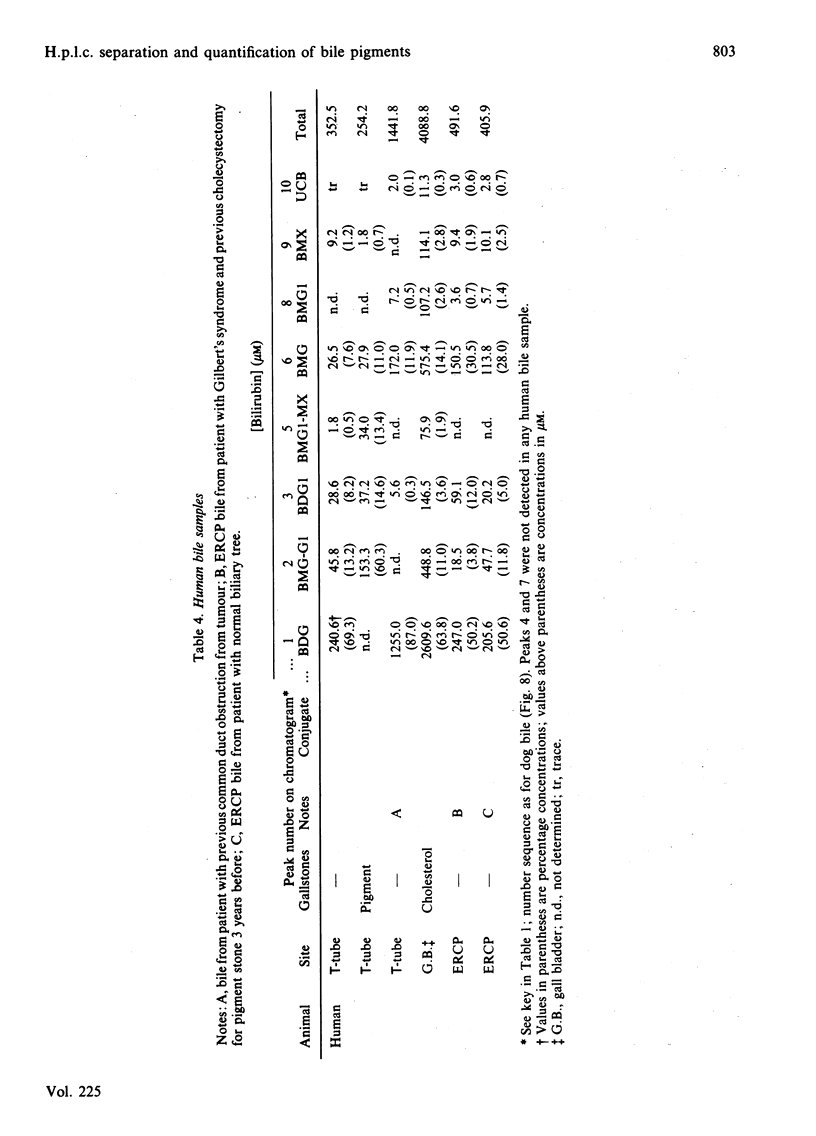
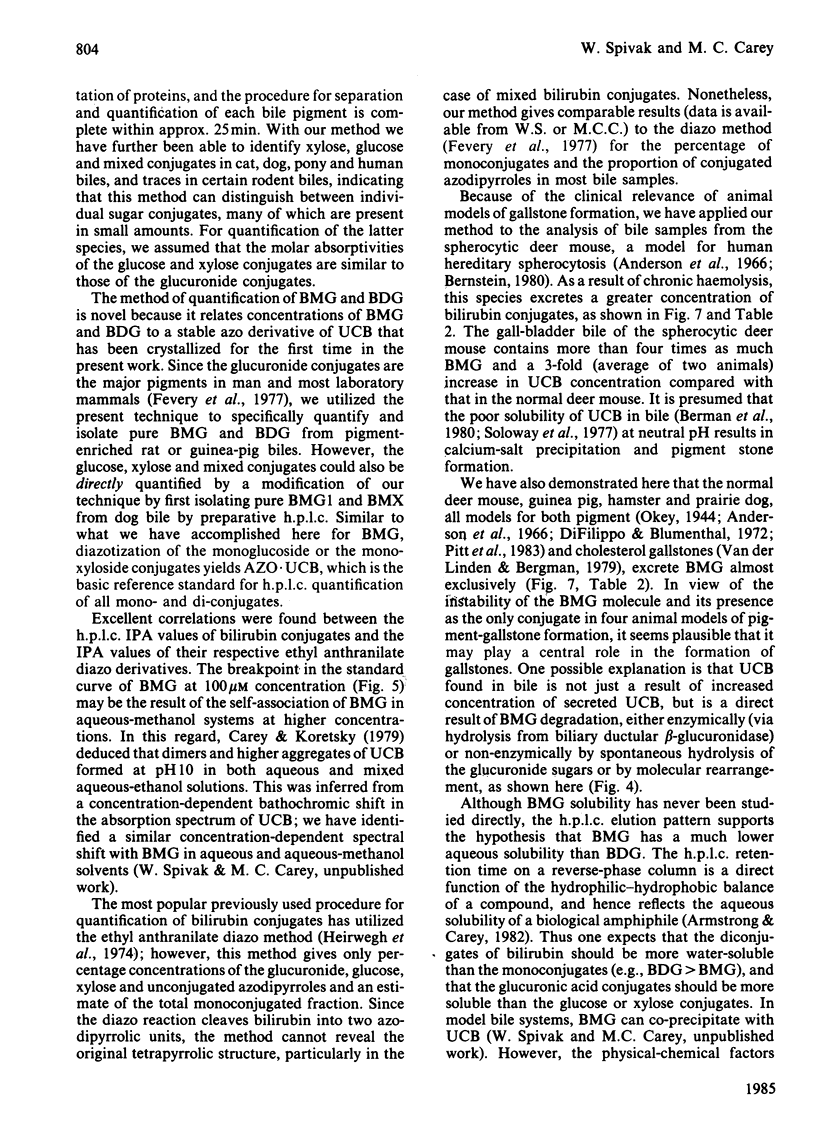
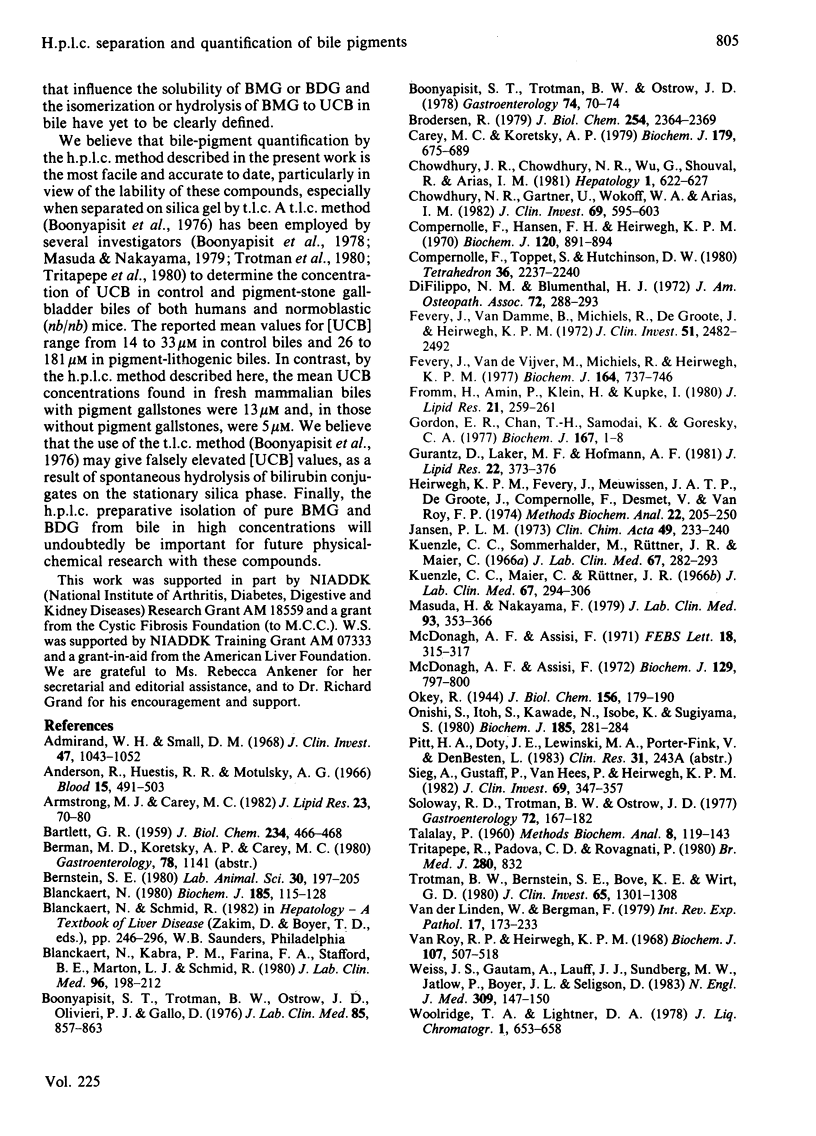
Selected References
These references are in PubMed. This may not be the complete list of references from this article.
- ANDERSON R., HUESTIS R. R., MOTULSKY A. G. Hereditary spherocytosis in the deer mouse. Its similarity to the human disease. Blood. 1960 Apr;15:491–504. [PubMed] [Google Scholar]
- Admirand W. H., Small D. M. The physicochemical basis of cholesterol gallstone formation in man. J Clin Invest. 1968 May;47(5):1043–1052. doi: 10.1172/JCI105794. [DOI] [PMC free article] [PubMed] [Google Scholar]
- Armstrong M. J., Carey M. C. The hydrophobic-hydrophilic balance of bile salts. Inverse correlation between reverse-phase high performance liquid chromatographic mobilities and micellar cholesterol-solubilizing capacities. J Lipid Res. 1982 Jan;23(1):70–80. [PubMed] [Google Scholar]
- BARTLETT G. R. Phosphorus assay in column chromatography. J Biol Chem. 1959 Mar;234(3):466–468. [PubMed] [Google Scholar]
- Bernstein S. E. Inherited hemolytic disease in mice: a review and update. Lab Anim Sci. 1980 Apr;30(2 Pt 1):197–205. [PubMed] [Google Scholar]
- Blanckaert N. Analysis of bilirubin and bilirubin mono- and di-conjugates. Determination of their relative amounts in biological samples. Biochem J. 1980 Jan 1;185(1):115–128. doi: 10.1042/bj1850115. [DOI] [PMC free article] [PubMed] [Google Scholar]
- Blanckaert N., Kabra P. M., Farina F. A., Stafford B. E., Marton L. J., Schmid R. Measurement of bilirubin and its monoconjugates and diconjugates in human serum by alkaline methanolysis and high-performance liquid chromatography. J Lab Clin Med. 1980 Aug;96(2):198–212. [PubMed] [Google Scholar]
- Boonyapisit S. T., Trotman B. W., Ostrow J. D., Olivieri P. J., Gallo D. Measurement of conjugated and unconjugated bilirubin in bile. II. A new thin-layer chromatographic method. J Lab Clin Med. 1976 Nov;88(5):857–863. [PubMed] [Google Scholar]
- Boonyapisit S. T., Trotman B. W., Ostrow J. D. Unconjugated bilirubin, and the hydrolysis of conjugated bilirubin, in gallbladder bile of patients with cholelithiasis. Gastroenterology. 1978 Jan;74(1):70–74. [PubMed] [Google Scholar]
- Brodersen R. Bilirubin. Solubility and interaction with albumin and phospholipid. J Biol Chem. 1979 Apr 10;254(7):2364–2369. [PubMed] [Google Scholar]
- Carey M. C., Koretsky A. P. Self-association of unconjugated bilirubin-IX alpha in aqueous solution at pH 10.0 and physical-chemical interactions with bile salt monomers and micelles. Biochem J. 1979 Jun 1;179(3):675–689. doi: 10.1042/bj1790675. [DOI] [PMC free article] [PubMed] [Google Scholar]
- Chowdhury J. R., Chowdhury N. R., Gärtner U., Wolkoff A. W., Arias I. M. Bilirubin diglucuronide formation in intact rats and in isolated Gunn rat liver. J Clin Invest. 1982 Mar;69(3):595–603. doi: 10.1172/JCI110486. [DOI] [PMC free article] [PubMed] [Google Scholar]
- Chowdhury J. R., Chowdhury N. R., Wu G., Shouval R., Arias I. M. Bilirubin mono- and diglucuronide formation by human liver in vitro: assay by high-pressure liquid chromatography. Hepatology. 1981 Nov-Dec;1(6):622–627. doi: 10.1002/hep.1840010610. [DOI] [PubMed] [Google Scholar]
- Compernolle F., Jansen F. H., Heirwegh K. P. Mass-spectrometric study of the azopigments obtained from bile pigments with diazotized ethyl anthranilate. Biochem J. 1970 Dec;120(4):891–894. doi: 10.1042/bj1200891. [DOI] [PMC free article] [PubMed] [Google Scholar]
- Di Filippo N. M., Blumenthal H. J. Experimental cholelithiasis in the golden hamster: effect of glucuronolactone. J Am Osteopath Assoc. 1972 Nov;72(3):288–293. [PubMed] [Google Scholar]
- Fevery J., Van Damme B., Michiels R., De Groote J., Heirwegh K. P. Bilirubin conjugates in bile of man and rat in the normal state and in liver disease. J Clin Invest. 1972 Sep;51(9):2482–2492. doi: 10.1172/JCI107062. [DOI] [PMC free article] [PubMed] [Google Scholar]
- Fevery J., Van de Vijver M., Michiels R., Heirwegh K. P. Comparison in different species of biliary bilirubin-IX alpha conjugates with the activities of hepatic and renal bilirubin-IX alpha-uridine diphosphate glycosyltransferases. Biochem J. 1977 Jun 15;164(3):737–746. doi: 10.1042/bj1640737. [DOI] [PMC free article] [PubMed] [Google Scholar]
- Fromm H., Amin P., Klein H., Kupke I. Use of a simple enzymatic assay for cholesterol analysis in human bile. J Lipid Res. 1980 Feb;21(2):259–261. [PubMed] [Google Scholar]
- Gordon E. R., Chan T. H., Samodai K., Goresky C. A. The isolation and further characterization of the bilirubin tetrapyrroles in bile-containing human duodenal juice and dog gall-bladder bile. Biochem J. 1977 Oct 1;167(1):1–8. doi: 10.1042/bj1670001. [DOI] [PMC free article] [PubMed] [Google Scholar]
- Gurantz D., Laker M. F., Hofmann A. F. Enzymatic measurement of choline-containing phospholipids in bile. J Lipid Res. 1981 Feb;22(2):373–376. [PubMed] [Google Scholar]
- Heirwegh K. P., Fevery J., Meuwissen J. A., De Groote J., Compernolle F., Desmet V., Van Roy F. P. Recent advances in the separation and analysis of diazo-positive bile pigments. Methods Biochem Anal. 1974;22:205–250. doi: 10.1002/9780470110423.ch5. [DOI] [PubMed] [Google Scholar]
- Jansen P. L. The isomerisation of bilirubin monoglucuronide. Clin Chim Acta. 1973 Dec 12;49(2):233–240. doi: 10.1016/0009-8981(73)90296-9. [DOI] [PubMed] [Google Scholar]
- Kuenzle C. C., Maier C., Rüttner J. R. The nature of four bilirubin fractions from serum and of three bilirubin fractions from bile. J Lab Clin Med. 1966 Feb;67(2):294–306. [PubMed] [Google Scholar]
- Kuenzle C. C., Sommerhalder M., Rüttner J. R., Maier C. Separation and quantitative estimation of four bilirubin fractions from serum and of three bilirubin fractions from bile. J Lab Clin Med. 1966 Feb;67(2):282–293. [PubMed] [Google Scholar]
- Masuda H., Nakayama F. Composition of bile pigment in gallstones and bile and their etiological significance. J Lab Clin Med. 1979 Mar;93(3):353–360. [PubMed] [Google Scholar]
- McDonagh A. F., Assisi F. Commercial bilirubin: A trinity of isomers. FEBS Lett. 1971 Nov 1;18(2):315–317. doi: 10.1016/0014-5793(71)80475-1. [DOI] [PubMed] [Google Scholar]
- McDonagh A. F., Assisi F. The ready isomerization of bilirubin IX- in aqueous solution. Biochem J. 1972 Sep;129(3):797–800. doi: 10.1042/bj1290797. [DOI] [PMC free article] [PubMed] [Google Scholar]
- Onishi S., Itoh S., Kawade N., Isobe K., Sugiyama S. An accurate and sensitive analysis by high-pressure liquid chromatography of conjugated and unconjugated bilirubin IX-alpha in various biological fluids. Biochem J. 1980 Jan 1;185(1):281–284. doi: 10.1042/bj1850281. [DOI] [PMC free article] [PubMed] [Google Scholar]
- Sieg A., van Hees G. P., Heirwegh K. P. Uridine diphosphate-glucuronic acid-independent conversion of bilirubin monoglucuronides to diglucuronide in presence of plasma membranes from rat liver is nonenzymic. J Clin Invest. 1982 Feb;69(2):347–357. doi: 10.1172/JCI110458. [DOI] [PMC free article] [PubMed] [Google Scholar]
- Soloway R. D., Trotman B. W., Ostrow J. D. Pigment gallstones. Gastroenterology. 1977 Jan;72(1):167–182. [PubMed] [Google Scholar]
- TALALAY P. Enzymic analysis of steroid hormones. Methods Biochem Anal. 1960;8:119–143. doi: 10.1002/9780470110249.ch3. [DOI] [PubMed] [Google Scholar]
- Tritapepe R., di Padova C., Rovagnati P. Are pigmented gall stones caused by a "metabolic" liver defect? Br Med J. 1980 Mar 22;280(6217):832–832. doi: 10.1136/bmj.280.6217.832. [DOI] [PMC free article] [PubMed] [Google Scholar]
- Trotman B. W., Bernstein S. E., Bove K. E., Wirt G. D. Studies on the pathogenesis of pigment gallstones in hemolytic anemia: description and characteristics of a mouse model. J Clin Invest. 1980 Jun;65(6):1301–1308. doi: 10.1172/JCI109793. [DOI] [PMC free article] [PubMed] [Google Scholar]
- Van Roy F. P., Heirwegh K. P. Determination of bilirubin glucuronide and assay of glucuronyltransferase with bilirubin as acceptor. Biochem J. 1968 Apr;107(4):507–518. doi: 10.1042/bj1070507. [DOI] [PMC free article] [PubMed] [Google Scholar]
- Van der Linden W., Bergman F. Formation and dissolution of gallstones in experimental animals. Int Rev Exp Pathol. 1977;17:173–233. [PubMed] [Google Scholar]
- Weiss J. S., Gautam A., Lauff J. J., Sundberg M. W., Jatlow P., Boyer J. L., Seligson D. The clinical importance of a protein-bound fraction of serum bilirubin in patients with hyperbilirubinemia. N Engl J Med. 1983 Jul 21;309(3):147–150. doi: 10.1056/NEJM198307213090305. [DOI] [PubMed] [Google Scholar]


